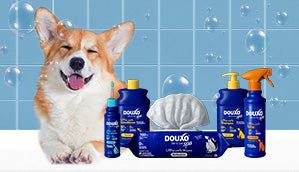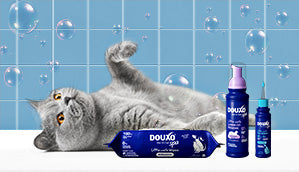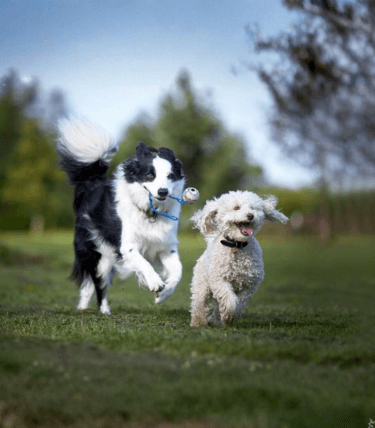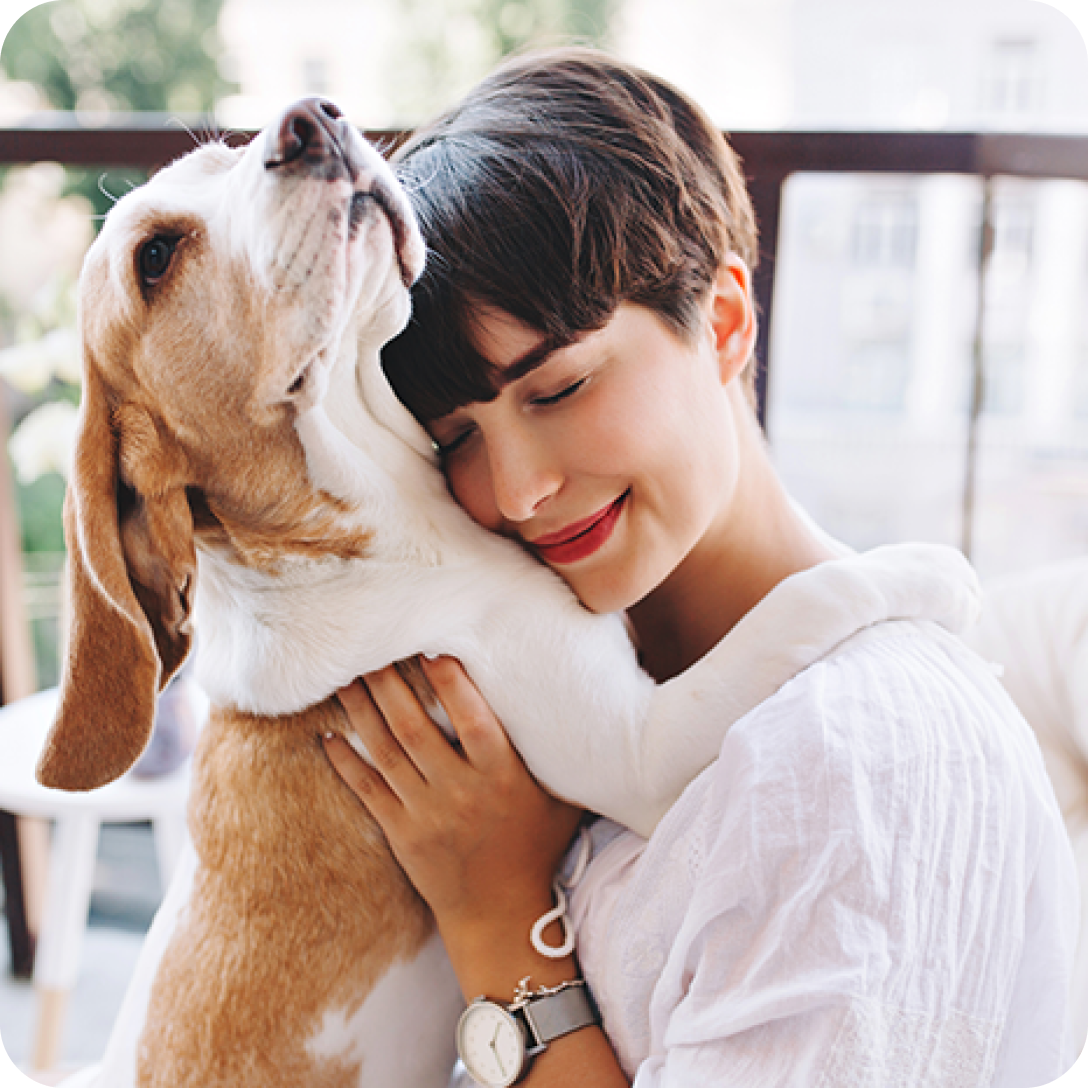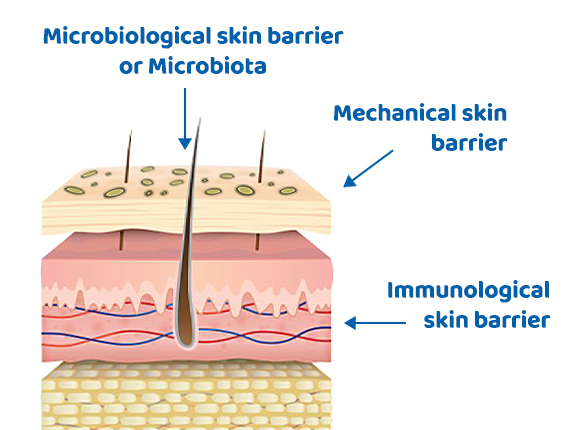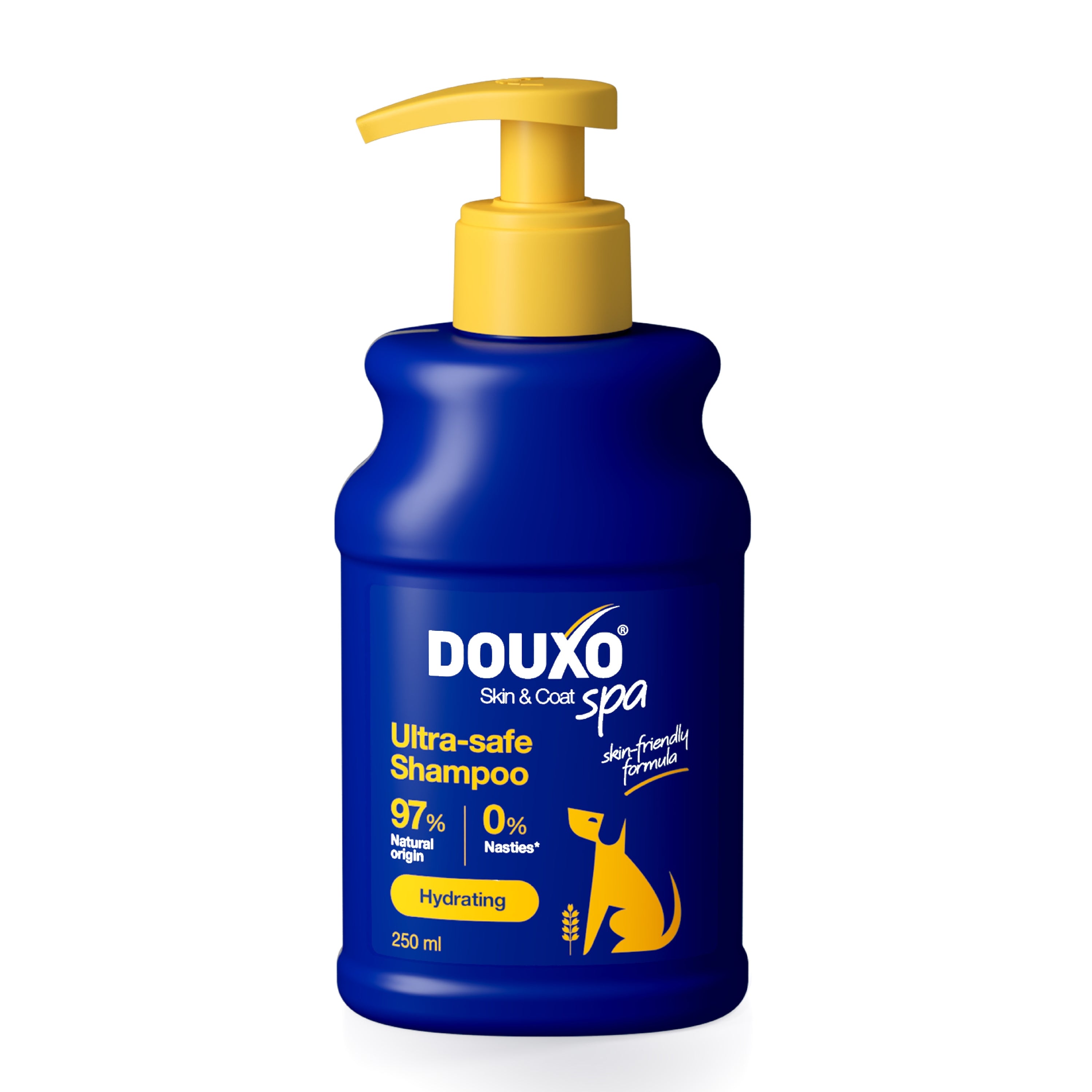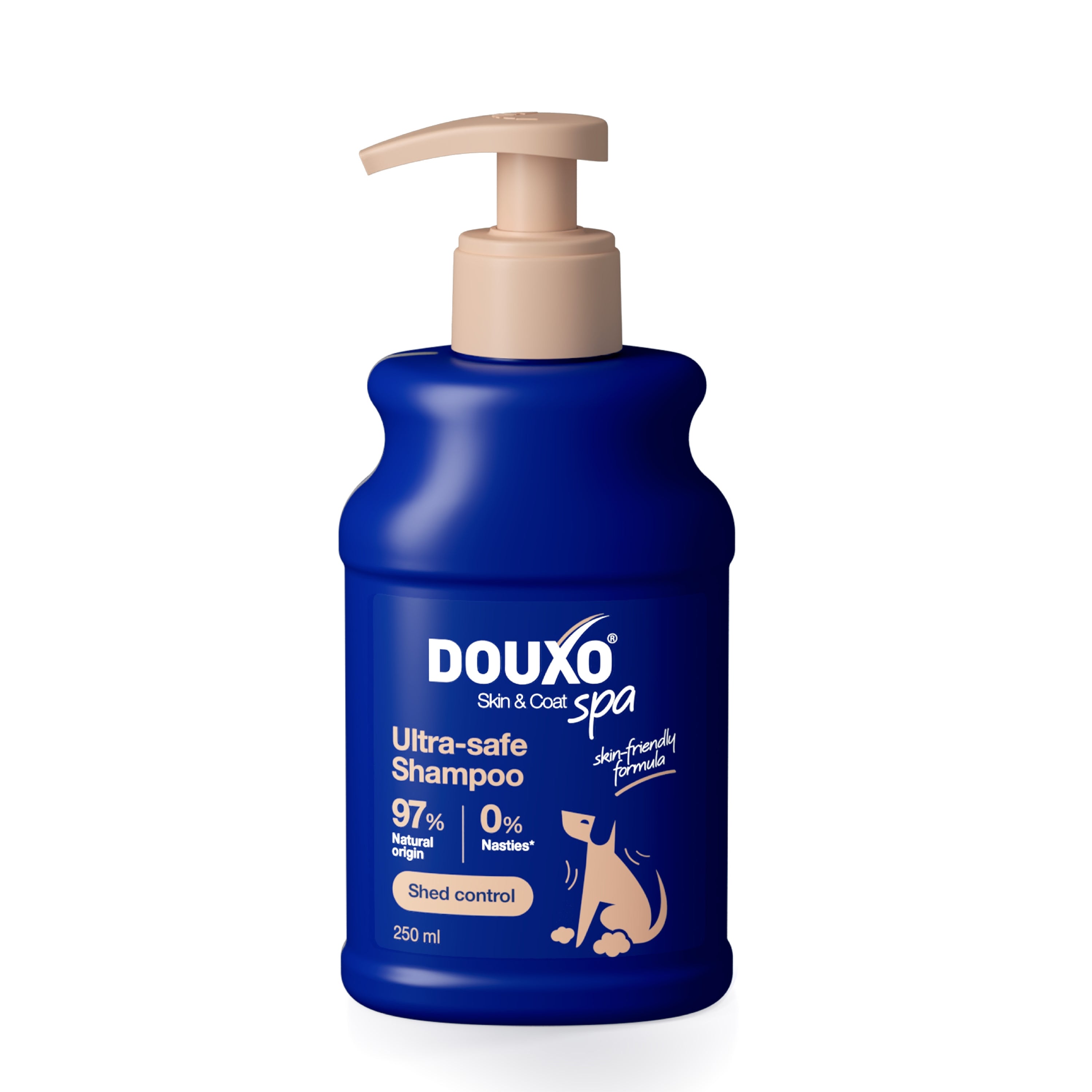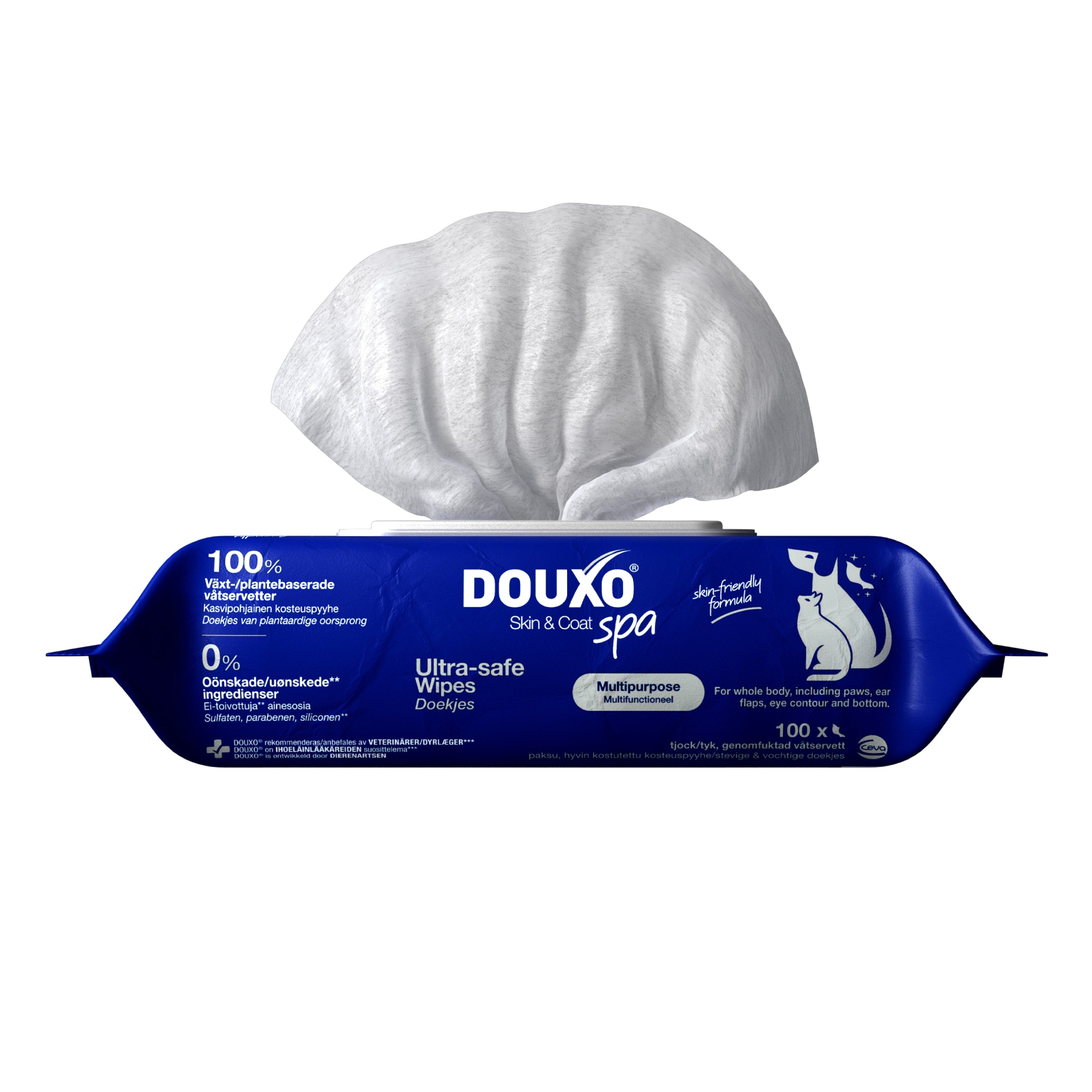Subscribe to our newsletter! Get 15% off your first order!
Key Points
The dog’s skin
The dog's ear
Diversity and care
The canine skin barrier, a complex and fragile ecosystem
The skin acts as a multifaceted barrier with critical life-preserving functions including environmental protection, temperature regulation, and the release of pheromones for territorial marking and social communication. The skin is a sophisticated ecosystem that ensures moisture retention, supports a healthy bacterial and yeast balance, and prevents the invasion of allergens and pathogens.
This intricate skin barrier relies on three components working in harmony:
The mechanical skin barrier: Comprising skin cells, proteins and ceramides, it forms a brick-and-mortar structure, acting as a protective wall to retain moisture and repel allergens and pathogens.
The immunological skin barrier: Composed of special immune cells and molecules that fight allergens or pathogens that manage to get past the skin barrier, protecting the rest of the body.
The microbiological skin barrier: A balanced mix of normal bacteria and yeast that prevent bad bacteria or yeast from taking over.
Maintaining the delicate balance between these skin barriers is crucial and requires consistent care and protection. Regardless of fur length or colour, many dogs may encounter skin problems. Signs such as dryness, irritation, oiliness, flakiness, hot spots, itching, and bacterial or yeast overgrowths can indicate that one or more of the skin barriers is compromised. If you observe any of these signs in your furry friend, consult your local vet promptly.
The canine ear, a complex organ
One of the most noticeable differences between dog breeds is the shape and size of their ears. From straight and floppy to small round ears and everything in between. However, once you look past the external ear and inside the ear canal, there are surprising similarities among dogs.
Understanding the internal workings of a dog's ear will help you look after your dog's ears better:
The Ear Flap: This refers to the outer ear that you can see (the pinna). It varies greatly between breeds.
The Ear Canal: This is inside the ear and is shaped like the letter L.
The Eardrum (Tympanic Membrane): A delicate barrier separating the ear canal from the middle ear.
The Middle Ear: Houses crucial structures for hearing.
The Inner Ear: Comprising the cochlea, responsible for hearing, and part of the vestibular system, contributing to balance.
These components play vital roles in hearing and balance. Notably, dogs with long, drooping ears are prone to infections due to restricted airflow and a continuously warm environment that promotes bacterial and yeast overgrowth.
If your dog is unbalanced or has a tilted head, it may indicate potential issues in the middle and inner ear. During ear cleaning, DO NOT insert cotton wool buds into the ear canal, as this may exacerbate problems by pushing earwax and debris deeper, risking damage to the delicate eardrum.
The dog’s coat, a huge diversity
Canine genetics are extremely diverse, contributing to the unique charm of each breed. Ranging from the rich black fur of a Labrador Retriever to the striking merle patterns of an Australian Shepherd and from the sleek, short fur of a Beagle to the flowing, long locks of an Afghan Hound.
The type of coat and its texture also help define a dog's coat. Dogs can have double coats, like the thick, insulating undercoat of a Siberian Husky, or single coats, like the smooth, glossy fur of a Dalmatian. Texture varies from wiry and coarse in breeds like the Scottish Terrier to soft and fluffy in the Bichon Frise. Understanding these differences is essential for proper grooming and coat care.
Age is another factor to consider, as puppies often have softer, finer fur that changes as they mature. Knowing the life cycle of your dog's hair can guide your grooming routine. For instance, senior dogs may develop specific coat issues, such as thinning or greying, requiring tailored care.
Regular grooming not only keeps a dog looking their best, but also promotes overall health by preventing matting, reducing shedding, and monitoring for skin problems. By selecting the right products based on your dog's unique coat needs, you ensure that grooming becomes a tailored and effective practice, keeping your furry friend healthy and happy.
DOUXO® Skin & Coat SPA can help you every day to take care of your dog.
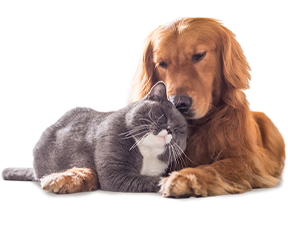
Find the right product for your pet
Take the quizUnlock the beauty of diversity in your dog's hair and ears. Whether your companion has long or curly hair, droopy or pointed ears, or smooth or wrinkled skin, all dogs are special and deserve specialized care. Our expert-formulated products are uniquely tailored to address concerns across all dog breeds, ensuring overall skin health. Embrace the richness of diversity in your furry friend with DOUXO® SPA, offering an experience as unique as your dog.





